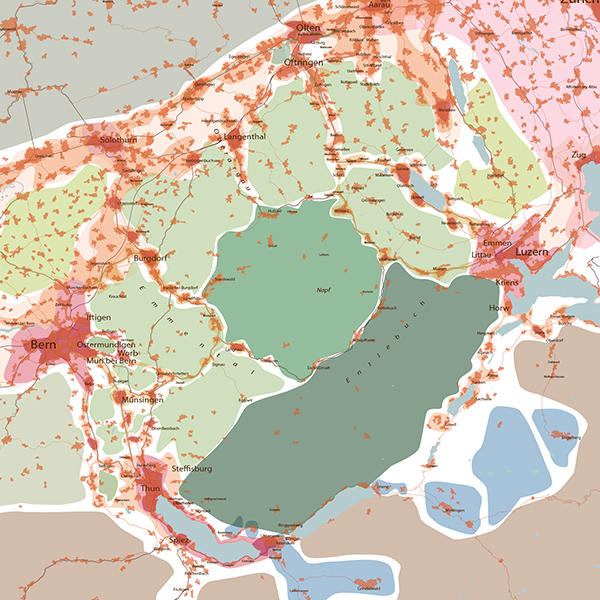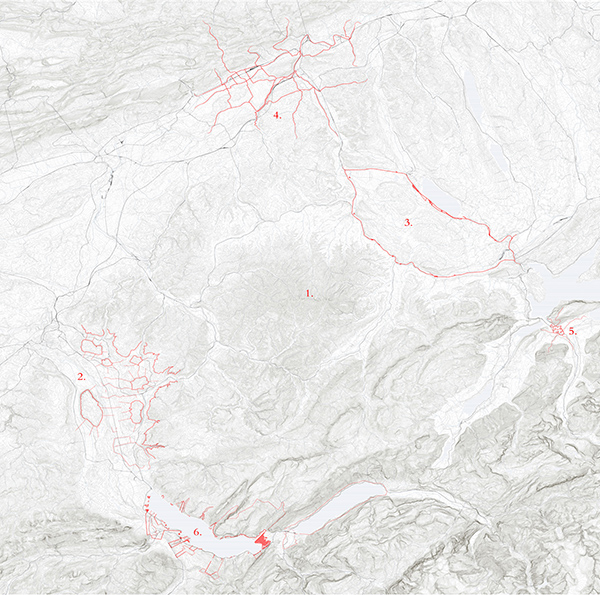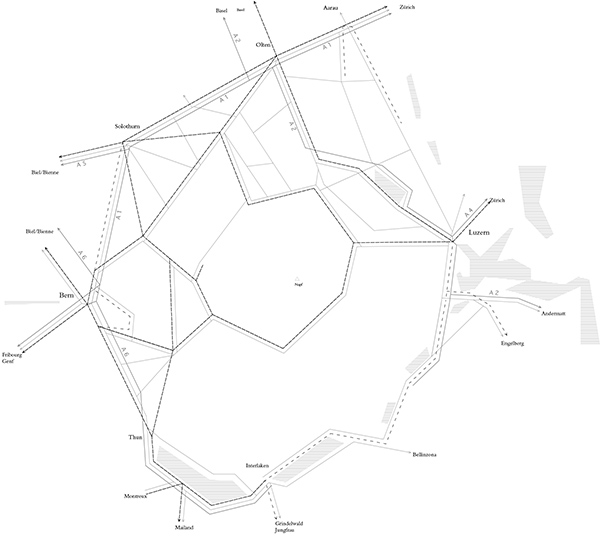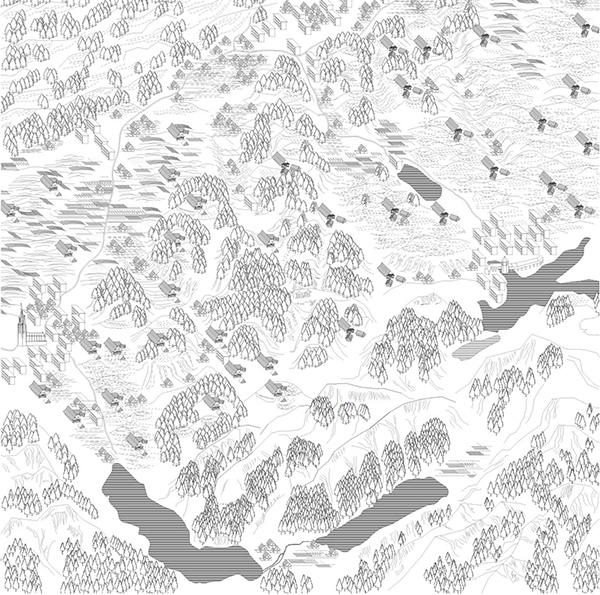Introduction The Mittelland and the Napf Region

Students: Nils Franzini and Ruben Bernegger
The work of this semester has focused on the Swiss Mittelland, the grand Central Plateau, the vast region in between the Alps and the Jura stretching from East to West across the whole country.
Even though the Mittelland takes only about 30% of the surface of Switzerland, 5 million people live there, which constitutes more than 60% of the Swiss population. As the settlement area in Switzerland is doubled since 1950, it is clear that the landscape of the Mittelland is strongly affected by urban sprawl and rising urbanization.
In order to tackle the Mittelland, in our work we have selected a limited section of this vast region, namely the central quiet zone (as it was called in die Schweiz. Ein städtebauliches Portrait), or the Napf, located at the very center of the Central Plateau. The choice is not random: the Napf region is a large un-built territory whose circumference touches upon various and different conditions of the Swiss territory, making it the right place in order to understand what the Mittelland as a whole is standing for.
As our research attempts to reveal, the Napf is a Region of differences, and these different characters can be understood as the seed for a new regional consciousness in which each part plays an active role in rethinking the future development of this territory. Rather than the ‘metropolitan model’, characterized by a center and a growing periphery made of sprawl and agglomeration , the Napf could be the testing ground for a different idea of living, where the cities are cities, where the agricultural territories are the place for an active agriculture, where each part of this larger region is given a clear identity and role and where these parts can be composed together in order to answer some of the emerging pressing questions in relation to food production, energy sovereignty, mobility, landscape protection

project proposals

transport network

landscape elements

commuter patterns

landprices

